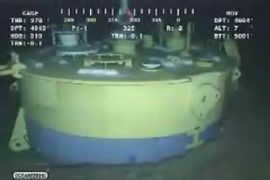BP begins ‘static kill’ of oil well
Oil giant begins pumping drilling mud into blown-out well in Gulf of Mexico.

The relief well, which is expected to be completed later in the month, could be used to pump more heavy drilling mud and cement into the blown-out well to deliver a so-called “bottom kill” ensuring that it is sealed.
| IN DEPTH | |
|
The “static kill” went ahead on Tuesday after engineers succeded in fixing a hydraulic leak in the temporary camp that temporarily halted the flow of oil two weeks ago.
“This is the day that so many along the coast have waited for,” Jay Grey of NBC News reported from Venice, Louisiana.
“This could be the beginning of the end … This is a process that is going to take two to three days before they are sure they are there and perhaps begin to pump in the cement.
“I think BP engineers are very confident, in fact they say that the margin for a problem has really dropped significantly.”
‘Proceeding cautiously’
Retired Coast Guard Admiral Thad Allen, who is overseeing the US oil spill response, said the “static kill” was proceeding cautiously so as not to damage the fractured well and cause fresh leaks.
“We don’t know the exact condition of the well,” he said.
Figures released on Monday showed that the more than five million barrels, spewed from the Macondo well after an explosion on the Deepwater Horizon rig on April 20, caused it to collapse and fracture the well head.
 |
| The ‘static kill’ operation involves injecting drilling mud into the well and concrete to seal the leak |
The resulting spill is the world’s largest accidental release of oil, surpassing the 1979 Ixtoc well blowout in Mexico’s Bay of Campeche that spilled out almost three million barrels.
If BP is found guilty of negligence over the spill, the flow rate of 62,000 barrels a day means it could face up to $17.6bn in fines.
The firm has also set up a $20bn fund to pay claims from individuals and businesses hit by the disaster.
Gulf fishing communities and business owners are still counting the cost of the spill, which forced the closure of large swaths of rich fishing grounds and dealt a severe blow to local tourism.
In a survey of 1,200 coastal Gulf coast residents by researchers at the National Center for Disaster Preparedness (NCDP) at Columbia University last month, 40 per cent said they had been directly exposed to the spill.
One in five residents told the Columbia researchers that their household income had fallen because of the disaster, with poor residents – those who earned less than $25,000 a year – feeling the pinch more than the better-off.
